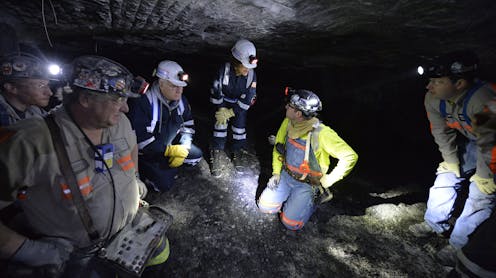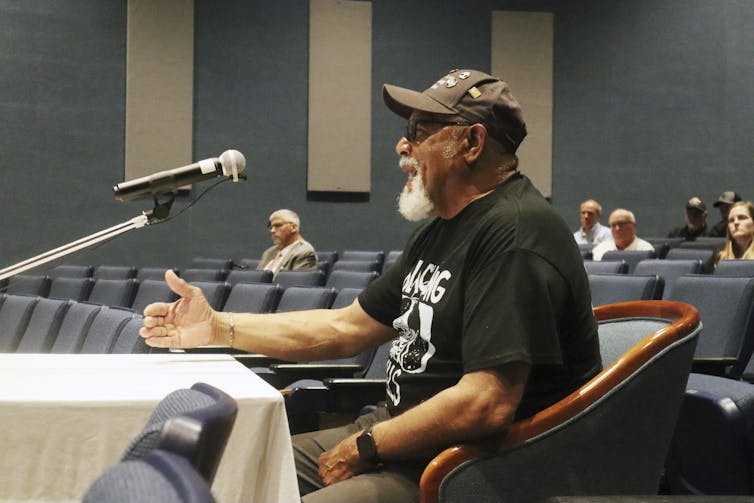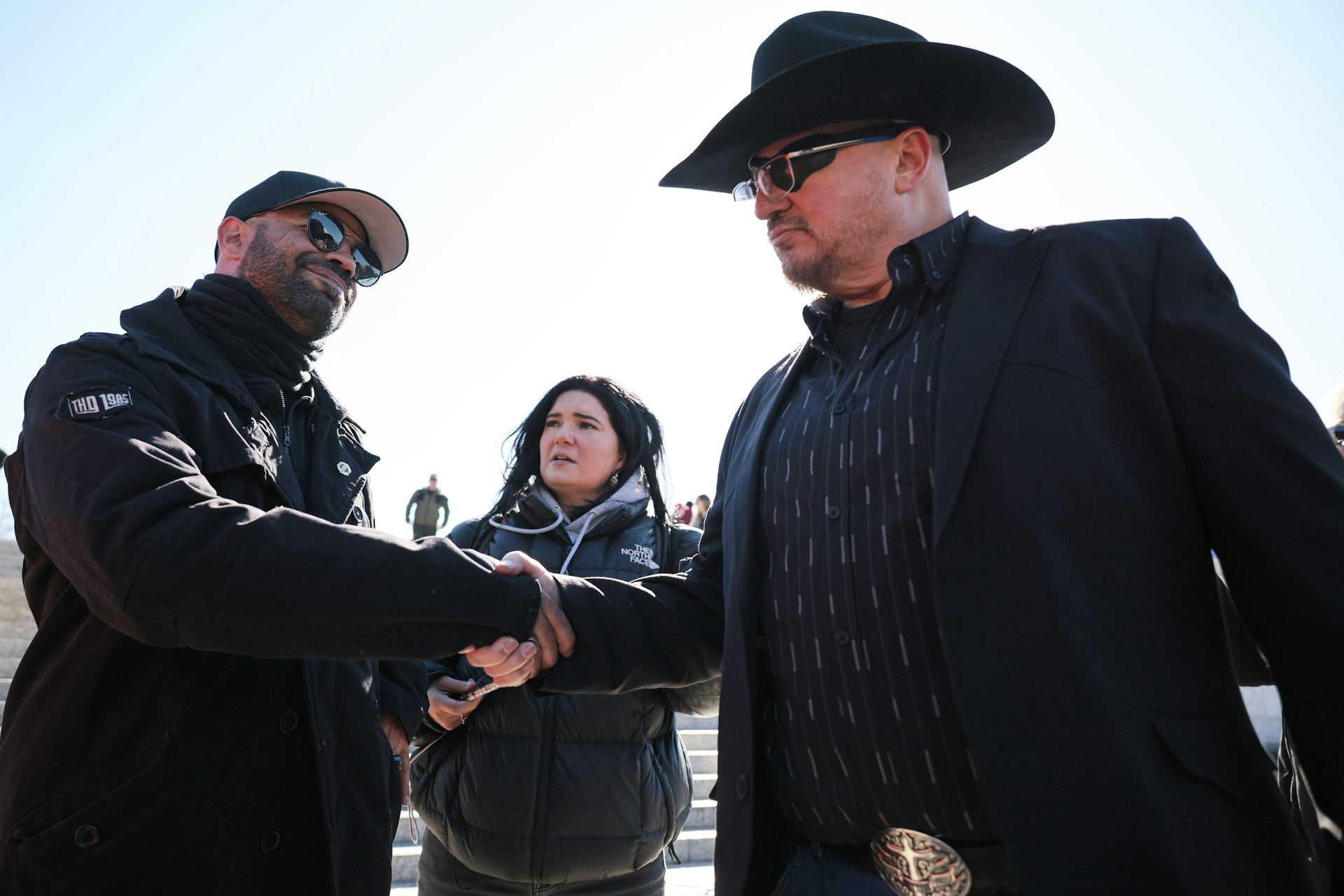Trump administration pauses new mine safety regulation − here’s how those rules benefit companies as
The democratic process of scientific study, public debate and comment helps regulators arrive at a rule that balances the needs and interests of workers, companies and the public.

President Donald Trump’s administration has announced its intention to pause or reverse regulations on mine safety, saying it wants to loosen rules that constrain companies. But as a scholar of both engineering and public policy, with a focus on the risk of exposures to air pollutants and other safety issues, I have seen how safety regulations are designed to benefit not only workers but also companies and the public as a whole.
Federal laws and other regulations require that rules written by federal agencies use scientific evidence about how to minimize risk. And under an executive order signed by President Bill Clinton in 1993 that is still in effect, regulations must be evaluated to make sure they produce more economic benefit for the nation than they cost.
This is not a simple or quick process. Let’s look at one rule as an example of how this plays out, and how the democratic process of scientific study, public debate and comment helps regulators arrive at a rule that balances the needs and interests of workers, companies and the public.
Silica dust exposure in mines
The Trump administration is pausing enforcement of a rule that requires coal-mining companies to protect their workers from exposure to silica dust, a fine powder generated when pulverizing rock that can damage their lungs to the point of needing supplemental oxygen or a lung transplant. Since the 1930s, federal officials have warned about this problem, which was identified in miners as far back as 1700.
The first U.S. regulations about miners’ exposure to silica dust were created in the early 1970s. But over time, safety practices and technology advances become less costly. And life expectancy and national wealth increase, raising the value of preventing a fatality or a disability.
Efforts to tighten the regulations began in earnest in 1996. Much of that work involved research into how inhaling silica affects a person’s health and how much exposure is required to lead to disease.
In 2019, the federal Mine Safety and Health Administration, part of the U.S. Department of Labor, opened an opportunity for the public, including mining companies, independent experts, regular citizens and anyone interested, to comment on the idea of reducing mine workers’ exposure to silica.
Based on all that information, in July 2023 the agency published a proposed rule. Then the agency held three public hearings – in Virginia, West Virginia and Colorado – which were collectively attended by 525 people, with 48 speakers and 157 submissions of written comments.
In April 2024 the agency published a final rule, which included responses to those comments. It was slated to take effect in April 2025 for coal mines and April 2026 for other types of mines. That final rule runs to 268 pages in the Federal Register, the official publication of all federal documents. It cut in half the amount of silica dust allowed in the air in mines from 100 micrograms per cubic meter to 50.
The rule was set to begin protecting coal miners on April 14, 2025. But just days before that deadline, the Trump administration announced it would pause enforcement of the rule for an undetermined period.

Costs and benefits
Evaluating costs and benefits of rule changes can be complicated. Each instance of injury, illness or death that is avoided doesn’t need medical treatment, doesn’t cause people to miss work, earn less and be less productive, and doesn’t shorten someone’s life.
The Mine Safety and Health Administration estimated that across the mining industry, its rule would avoid 531 deaths and 1,836 cases of silica-related illnesses over the next 60 years. Officials calculated those benefits were worth $294 million a year.
Regulations do have costs. Some rules may require buying equipment, such as new respirators, ventilation machinery and sensors to monitor dust levels in mines. Workers need to be trained on new procedures and equipment, too. Often, as with the silica dust rule, companies must monitor employees’ health to ensure the measures are working and take steps to correct problems that arise. The estimated total cost of the silica dust rule to all affected companies was $89 million a year.
The value of the benefits and the expenses of the costs, including of this regulation, often end up being debated in court. Ultimately, the estimated costs of compliance with the rule not only are far less than the estimated benefits, but are just 0.07% of the $124.2 billion in estimated annual revenues for the mining industry.
Uneven effects
The effects of the costs and benefits are not always spread evenly. Some companies that are struggling to remain profitable and are using aging, inefficient equipment or working in a particularly challenging mining environment may not have enough money to comply. They might have to shut down operations or sell to a new owner.
But companies that are more successful would have the money to invest to comply – and perhaps less need for new or upgraded equipment to meet the standards while keeping their workers productive.
And in fact, many companies already met the standard, even before it was slated to take effect. In a study running from 2016 to 2021, the Mine Safety and Health Administration found that more than 93% of coal miners were exposed to lower levels of silica dust than the proposed new limit. But that meant that about 7% of coal miners were not – and 1.3% of them were exposed to levels higher than the then-current limit of 100 micrograms per cubic meter.
The effect of a reversal
When regulations are paused or rescinded, companies may be able to save a little money. They don’t have to immediately take action to reduce exposure and avoid fines.
Rescinding a regulation is not a trivial task. That process must also involve risk assessment and economic justifications, according to the Administrative Procedure Act.
And even if a rule is paused or reversed, the dangers still exist. The documentation in the rulemaking history provides a ready recipe for a liability claim against an organization that ignores that information. A worker who developed cancer due to heightened silica exposure would have a mountain of public evidence available for a lawsuit seeking damages.
Why are regulations necessary?
Regulations help workers by giving them an understanding of the risks they face in these jobs. Workers don’t have the time, equipment or expertise to conduct their own analyses in each mine operated by each company.
Regulations also help companies: They ensure competition is on an even playing field by preventing some firms from cutting corners and lowering their prices at the expense of worker safety and health. The companies also have a lower risk of losing experienced workers to illness, injury, death or better working conditions elsewhere. More experienced workers are more productive, earning the companies more money. And longtime workers contribute to safer workplaces, which incur fewer company costs for workers’ compensation claims.
The public benefits too. Without regulations, companies may be able to escape paying the long-term costs of chronic diseases that appear years after exposure. That cost then falls on the overall health insurance marketplace, or on taxpayer-funded Medicare and Medicaid services, driving up expenses for everyone.
Jeremy M. Gernand receives funding from the Health Effects Institute and the National Institute for Occupational Safety and Health.
Read These Next
West Coast levee failures show growing risks from America’s aging flood defenses
Levees protect more than 7 million buildings in the US today, yet they got a D-plus grade in 2025. A…
LA fires showed how much neighborliness matters for wildfire safety – schools can do much more to te
Managing fire risk is about more than regulations and rules. It’s also about caring for neighbors…
Has the Fed fixed the economy yet? And other burning economic questions for 2026
As 2026 begins, uncertainty is at the top of everyone’s mind.






